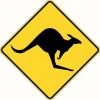I am trying to pick up some hand tool skills, and I understand that sharpening correctly is very important for getting the best performance out of the tools. I have been reading -- arguably too much -- about how to sharpen plane blades, and I am now totally confused about the grinding part of the sharpening process. Some discussions of sharpening start with someone taking the iron to a grinding wheel, while other discussions start the process with oil or water stones. Can a plane blade be properly sharpened without using a grinder?
If a grinder is required, how often do you need to regrind the primary bevel?
I have a Stanley 5 that I purchased off of Craigslist that I am trying to learn on. I do not have a bench grinder, and given my limited space, I would really prefer to not have to use one. So far I have been trying to get by using a cheapo two sided sharpening stone from Amazon. Results have been meh. I just ordered this set of oil stones (https://www.bestsharpeningstones.com...&product_id=77) and got a strop. I have also been using a honing guide.
Apologies if this should be obvious. Sometimes there is too much information on the internet.






 Reply With Quote
Reply With Quote







